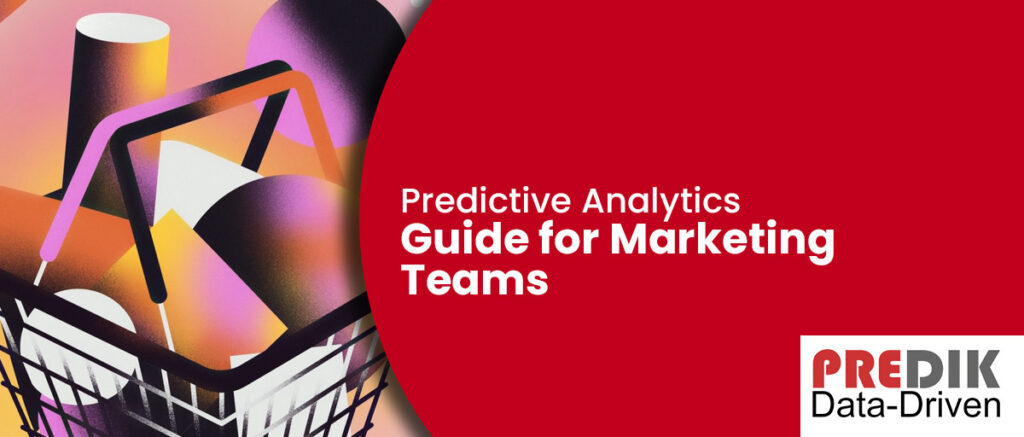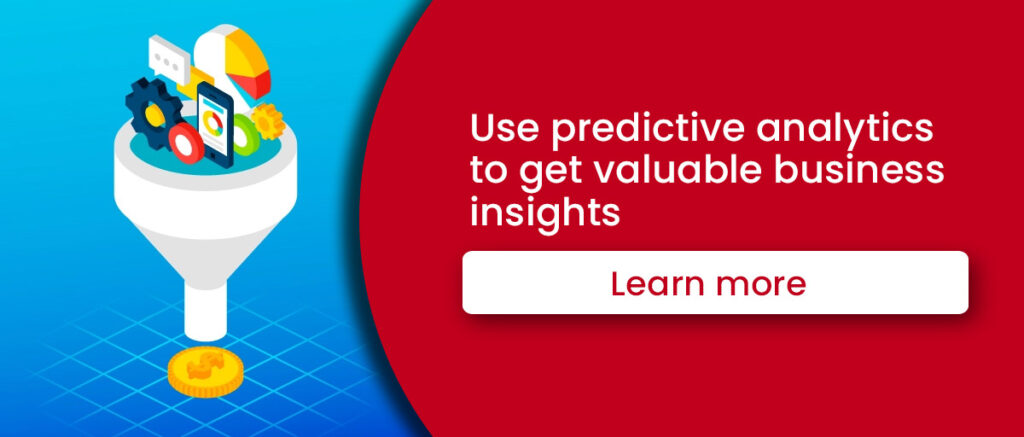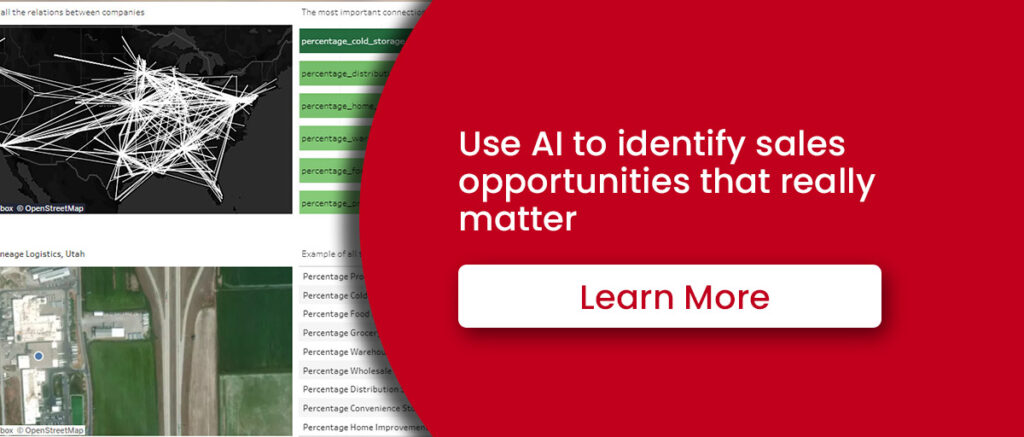Predictive marketing analytics helps teams estimate which strategies and actions will have higher success probabilities according to KPI’s objective. In other words, predictive analytics help marketers make better, more strategic decisions.
It can be challenging for marketers to identify trends and patterns on time as they are influenced by various factors, some of which are easy to recognize while others are not.
Well, predictive models help marketing teams connect all the required data to identify and anticipate future consumer behavior and market needs changes. That is how marketers can better plan and gain a competitive advantage.
This article wil cover the following topics:
What is predictive marketing?
Predictive marketing leverages data-driven insights to anticipate customer behavior and optimize marketing strategies. It goes beyond traditional methods that rely solely on historical data or intuition.
Predictive marketing uses machine learning to analyze data points such as demographics, past purchases, and online activity to forecast future customer behavior, unlike traditional marketing, which focuses on past and present data.
This analysis helps marketers identify patterns and predict customer actions such as:
- Likelihood of purchase
- Preferred products or services
- Engagement with specific marketing channels
“91% of top marketers are either fully commited or already implementing predictive marketing”
Salesforce
How does predictive marketing works?
Predictive marketing is part of the big universe of predictive analytics. Predictive analytics involves analyzing large sets of customer and market data through data mining, Big Data, and Machine Learning. This process helps to forecast marketing trends, customer behavior, and campaign outcomes.
Predictive models use historical data to suggest actions that can help achieve similar or better results in the future.
There are different types of predictive models, like clustering models, forecast models, time-series models, and neural networks. You can read our complete guide if you want a more technical explanation.
Benefits of predictive analytics in marketing
Predictive marketing has numerous benefits that can help businesses drive sales and growth. However, it can also extend beyond that.
Accurately anticipating future trends can influence every aspect of marketing. With more precise tracking of data points, marketers can easily anticipate trends across different channels. This allows for a more granular and accurate analysis of the market, which can be invaluable in making informed business decisions.
Advanced customer segmentation
Using Machine Learning, predictive models can detect hidden patterns and relationships within customer data. By analyzing different data sources like transactions, sales, in-store visits, website preferences, POI information, and social media activity, brands can get an in-depth idea about the customers.
Why is this important? Marketers can develop more specific buyer personas by genuinely understanding consumer behaviors, motivations, needs, and desires. Having this, predictive models can also provide the necessary insights to tailor brand experiences, improve customer satisfaction and increase loyalty in each customer segment.
Enhanced marketing research processes
Marketing is all about testing, analyzing, and re-testing. But this process can be time and resource-consuming.
Fortunately, predictive models can use historical and current data regarding marketing strategies and campaigns to understand what has worked and what do not. Then, these models can estimate which strategies can bring better results based on different market factors.
Imagine estimating your marketing campaigns’ ROI more accurately while avoiding unnecessary costs and mistakes.
We recommend you: Learn how to use data-driven apprach to get valuable market insights
How Coca-Cola uses predictive analytics to increase product consumption?
Coca-Cola collects data on consumer preferences and purchasing habits to serve its customers better. This information helps the company tailor its product marketing strategy and create a more personalized consumer experience.

For example, Coca-Cola listens to customer feedback on social media. Then, marketers use the collected data to fine-tune their products and improve the brand experience. The company aims to enhance consumer loyalty and increase sales by doing so.
Lead prioritization
Predictive analytics not only allows marketing and sales teams to build their strategies and campaigns better. Also, predictive models can look into a company’s sales behavior and lead generation results to indicate which prospects are most likely to convert (And only focus on them).
Product development
Product development teams rely a lot on marketing feedback. For both departments, it is not only essential to meet current consumer needs but also to be able to fulfill future demand with new alternatives and solutions.
Where is the challenge? Having the wrong insights can lead to costly and incorrect product development decisions. That is why predictive marketing can use alternative data to reveal potential market trends before they emerge.
Learn more: The Best Way to Do Market Research for a New Product Development
How Nike uses predictive analytics to develop new products
Nike leverages their retail predictive models with data like purchase patterns and social media behavior to proactively anticipate customer needs, enhance its products and services, and optimize business processes.

Nike’s senior leadership team members can also access personalized analytics dashboards and data visualization tools tailored to their decision-making requirements.
Understand market potential in a new channel
Predictive analytics can provide insights into unattended marketing channels and POS with high revenue potential.
In addition to saving time and resources, marketing teams focus on channels that can result in exciting business opportunities.
How L’Oreal uses predictive analytics to reach the right target consumers?
L’Oréal’s luxury products are mainly sold in physical stores even though customers often learn about the brand and engage with it online. This posed a challenge as linking digital marketing efforts to offline sales was difficult.

To address this issue, the team in Taiwan uses predictive models to identify potential customers who are likely to purchase in stores and target them with advertising campaigns.
Product and stock availability
For some companies, product availability can be a real headache. As Oracle mentions, effectively managing stock availability requires balancing customer expectations and possible demand with the cost of maintaining inventory in a dynamic marketplace.
Predictive marketing helps forecast future product demand to keep ideal-level stocks, anticipate consumption shifts, risk assessment and optimize supply chain processes. After all, these are necessary elements to provide a good customer experience.
Learn more: Big Data and Its Impact On Supply Chain Management
How Walmart uses predictive data to make its pharmacies more efficient?
Walmart uses simulations at their pharmacies to find out how many prescriptions are filled in a day. The brand also analyses the busiest times during a day, week, or month.

All this data helps the pharmacy with its inventory control, staff scheduling, and reducing the time it takes for a prescription to be filled.
Identify loyal clients
Can marketers identify if a user will become a frequent customer? With predictive analytics, they can. By analyzing data like consumer patterns, website visits, and app usage, marketing teams can target “loyal consumers” and provide them with personalized experiences to retain them.
How Zara uses data analytics to identify loyal consumers?
Zara makes sure to be available in all channels where its customers are. Also, the brand encourages them to become brand ambassadors by actively participating in their campaigns.
Zara’s marketing team collects all this data to identify the most active users and sends personalized offers using predictive insights.
Considerations for predictive marketing in 2024
It requires data (good data): Creating an effective predictive marketing strategy requires quality, not only quantity. Remember, how good your data will define how insightful your marketing can be.
Having problems knowing how to start? We can help you develop a highly effective data strategy for your organization. Book a demo with our experts>>
You need to have a clear goal: Implementing predictive marketing is not a goal per se; it is merely a way of making better decisions. A successful predictive analytics strategy needs a specific business objective, such as increasing foot traffic in a retail physical store or increasing conversion rates for a particular product line.
Do not forget about the importance of a good data process implementation: Not only data quality and quantity are essential, but it is also important to have a correct data process for collecting, cleaning, and organizing this data so a predictive tool or algorithm can leverage it.
Final thoughts
Predictive data can give you a competitive edge, help you make informed decisions, and improve your market share. Predictive models can anticipate future outcomes and provide data-driven strategies by analyzing historical data and identifying patterns.
You might hesitate to try it out, thinking it’s too technical and time-consuming. However, recent advances have made it more accessible and user-friendly, and the benefits are worth it. Remember, it’s about analyzing data and understanding what it means.
If you’re unsure where to begin, at PREDIK Data-Driven, we can help you. We specialize in developing effective models that turn data into valuable insights for your business.





